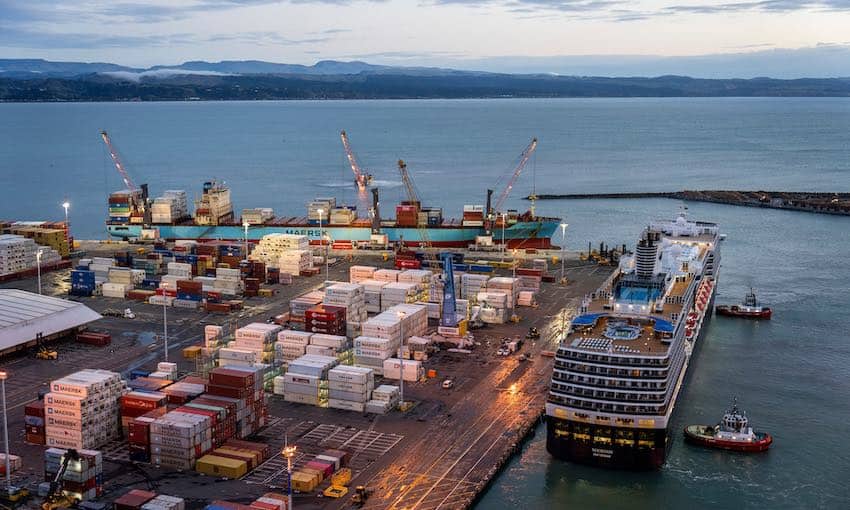NAPIER Port has reported an increase in revenue for the year to 30 September 2023 despite a “significant reduction” in trade volumes.
The North Island port’s revenue grew 3.4% to NZ$118.4 million while container volumes dropped 12.7% to 222,000 TEU.
Container services’ average revenue per TEU increased by 10.2% compared to the prior year due to tariff increases as well as shipping line and container mix changes, increased vessel calls and higher container depot revenues.
Napier Port attributed the decline in container volumes to the closure of a local forestry company’s facilities after Cyclone Gabrielle in February this year. Lower produce and chilled exports due to crop losses also contributed.
The result from operating activities was NZ$37.2 million, a 7.1% decrease compared with NZ$40.1 million in the previous year with revenue increases not fully offsetting inflationary cost pressures.
Reported net profit after tax was NZ$16.6 million, a 18.8% decrease on the prior year’s NZ$20.4 million. Underlying net profit after tax, excluding net insurance proceeds and revaluation gains, decreased from NZ$18.6 million to NZ$10.7 million.
Napier Port chair Blair O’Keeffe said the 2023 financial year started “very well” for the port and the region’s cargo owners before the cyclone hit.
“Pandemic pressures, including constraints on labour and supply chain disruptions, were easing,” he said.
“Cargo flows were buoyant supported by new shipping services calling at Napier Port and new customers and cargo arriving through the gates.
“Trade during the first half showed strong growth in revenue, and operating earnings, and demonstrated our capability to deliver under ‘normal’ operating conditions.”
But Mr O’Keefe said the landing of Cyclone Gabrielle dented the rebound from the pandemic.
“It damaged our customers’ crops, exporters’ premises and regional infrastructure, diluted trade volumes and overshadowed the steady progress we had made,” he said.
“Nevertheless, thanks to the good progress in regional recovery efforts and positive signs in key export trades and the cruise industry, we are now looking forward to a resumption of the momentum we saw at the start of the year.”
Napier Port’s bulk cargo volume was down 12.8%, to 3.2 million tonnes from 3.65 million tonnes a year earlier.
Bulk cargo average revenue per tonne increased by 15.7% compared to the prior year.
The fall was largely due to an 11.3% reduction in log volumes, to 2.5 million tonnes compared to 2.8 million tonnes in the prior year as adverse weather and damaged roading infrastructure hampered harvesting.
The log trade was also affected by subdued export market conditions for much of the year.
The port said the impact of these lower volumes on revenue was offset by the return of cruise vessels and tariff adjustments to address the impact of inflationary pressures and “significant infrastructure investment”.
Napier Port chief executive Todd Dawson said despite the challenges caused by the cyclone, 2023 had reinforced the resilience of the port, the region and cargo owners.
“In the face of the significant challenges of the past year, connecting customers to their markets, understanding their needs, and helping them achieve their goals has remained a firm priority for Napier Port,” he said.
“We have achieved this goal … by ensuring continuity of service, a good range of shipping services calling at Napier Port, providing flexible, innovative, and integrated supply chain services, and by prioritising regular and timely communications supporting the efficient receipt and delivery of customers’ cargo.
“We have backed up these efforts with a focus on continuing cost and capital discipline, and yield management as a result of our investments in infrastructure and additional customer services on port. This positions Napier Port well as our region and trade volumes recover.”
Napier Port said persistent inflation pressures, tighter monetary conditions, and uncertainty in key international export markets continue to represent headwinds, but it is optimistic for the new financial year.





